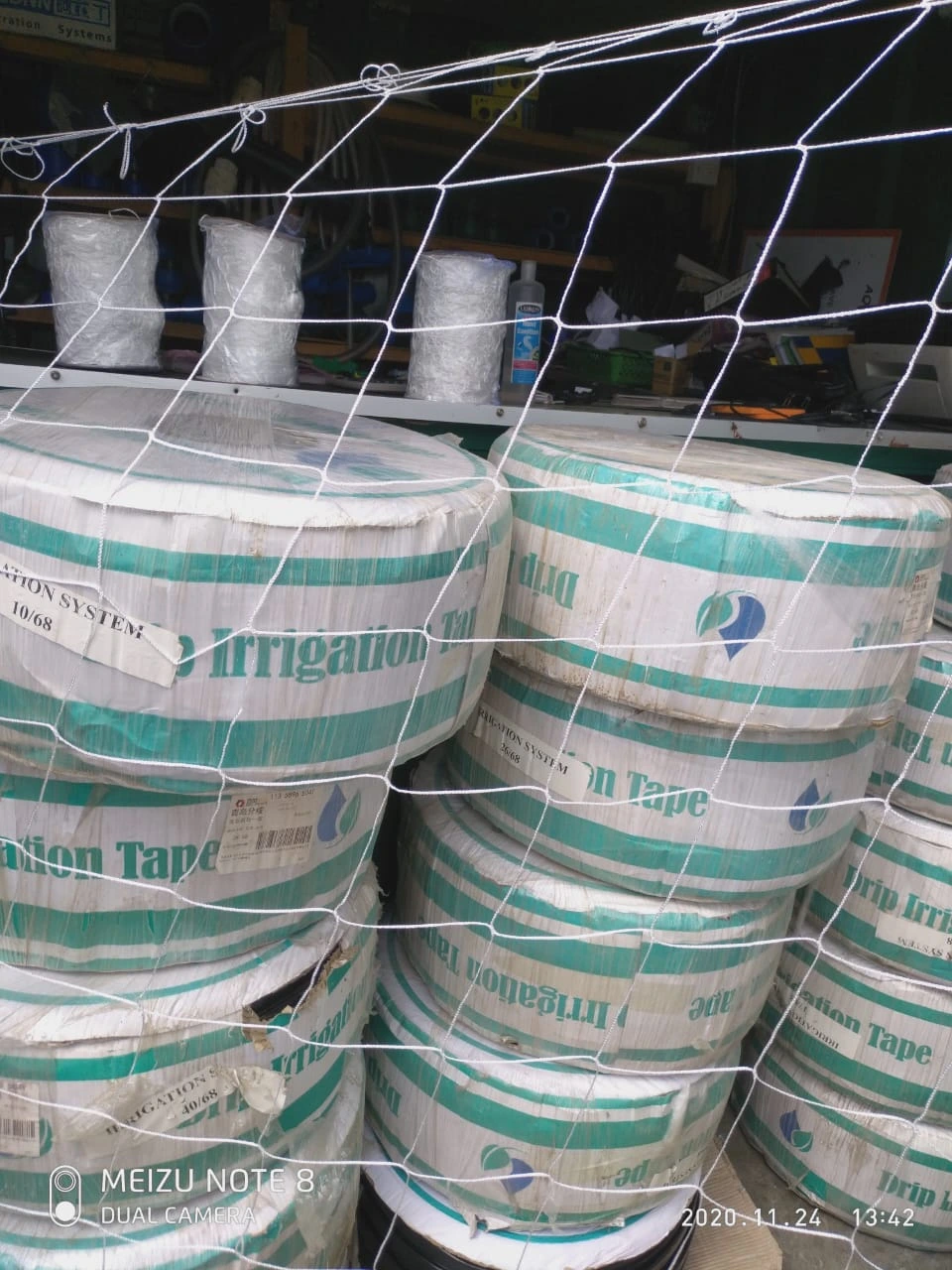Drip irrigation is gaining popularity in Kenya and farmers as well as growers are trying so hard to make sure that they irrigate their farms with drip irrigation system to increase the level of crop production. The cost of buying and installing drip irrigation system is dependent on different factors which had been discussed in our previous article. In this article, we well illustrate further on the coast of one acre drip irrigation kit.
Table of Contents
Materials and their Cost for One Acre Drip Irrigation Kit
In setting up a one-acre irrigation kit, the farmers and growers are encouraged to first know some of the very important materials that they will need and their prices. In this section, the most important materials will be covered and their prices provided for a one-acre farm.
| Item | Cost |
| Gravity Hydrant | 11,000 |
| Tank stand | 65,000 |
| Water Tank (5,000L) | 34,000 |
| Installation of drip kit | 12,000 |
Cost of One Acre Drip Irrigation Kit in Kenya
In determining the cost of one acre drip irrigation in Kenya, the technicians will consider the need of the farmer and the crop or plant to be grown. The farmer might need a different number of drip lines per bed but this is always determined by the type of crops or plants that the farmer wish to plant in the farm.
| Size of Farm | Number of Lines Per Bed | ||
| 1 Line | 2 Lines | 3 Lines | |
| 1 Acre | 68,000 | 92,000 | 127,000 |
| ½ Acre | 31,500 | 44,000 | 58,800 |
| ¼ Acre | 17,000 | 25,700 | 37,000 |
| 1/8 Acre | 9,500 | 16,000 | 21,000 |
Wondering where to buy thee drip kit irrigation system in Kenya, worry no more. At EUNIDRIP we care about your needs and our desire is to make you reap from what saw. We have drip kip irrigation system available at better prices. We also have technicians able to carry out all the process from site inspection to installation and commissioning.
Simple drip irrigation in Kenya
Simple drip irrigation is the method of using readily and locally available drip materials that are affordable at low costs.
Drip irrigation system in kenya is very economical for practicing kitchen gardening or urban agriculture which involves the growth of vegetables in the balconies and verandahs.
Few individuals who prefer beautification of their compounds or verandahs by use of flowers can also use drip irrigation system.
Relating simple drip irrigation to Kenya’s economy, one can use a maximum of ksh 15000 for an average farm of eight meters (8m) by fifteen meters (15m).
When proper conditions for the growth of the chosen crop are met, one can earn at least
ksh40, 000. This amount is quite profitable for side hustling or farming beginner.
Components of a 1 Acre Drip Irrigation Kit in Kenya
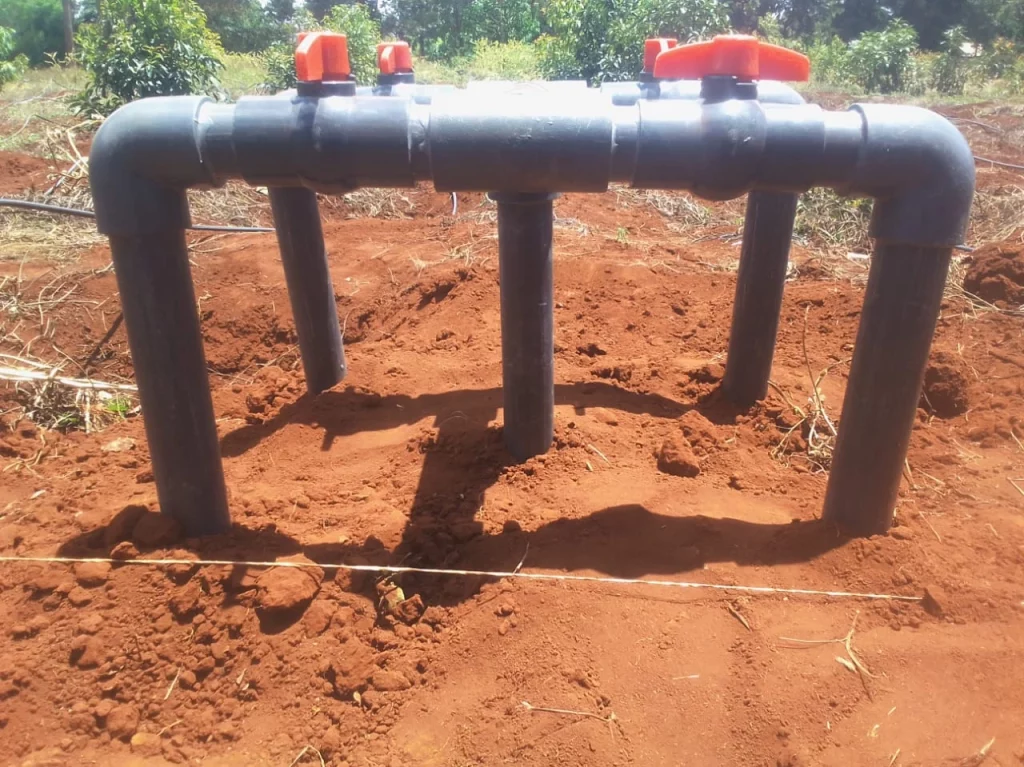
Water Hydrant for 1 Acre Drip Kit
An irrigation water hydrant is a device that is used to connect irrigation equipment to a pressurized water source. It is typically located near the irrigation system, and it is used to control the flow of water into the system.
Irrigation water hydrants come in a variety of sizes and configurations, but they all have the same basic components:
- A valve that controls the flow of water
- A spout or outlets that connect to the irrigation equipment
Drip Pipes
Drip pipe is the pipe that delivers water directly to the roots of your plants. It is typically made of black polyethylene and has emitters spaced at regular intervals. Emitters are small orifices that release water at a controlled rate. Drip pipe is typically buried just below the surface of the soil, so that the emitters are close to the plant roots.
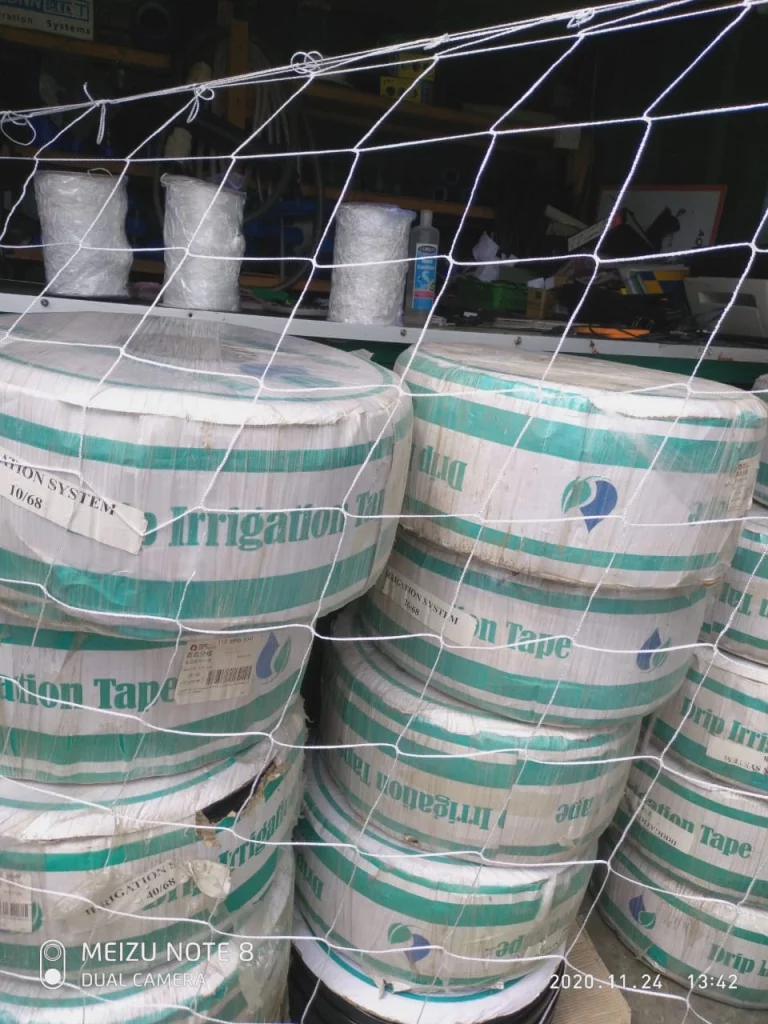
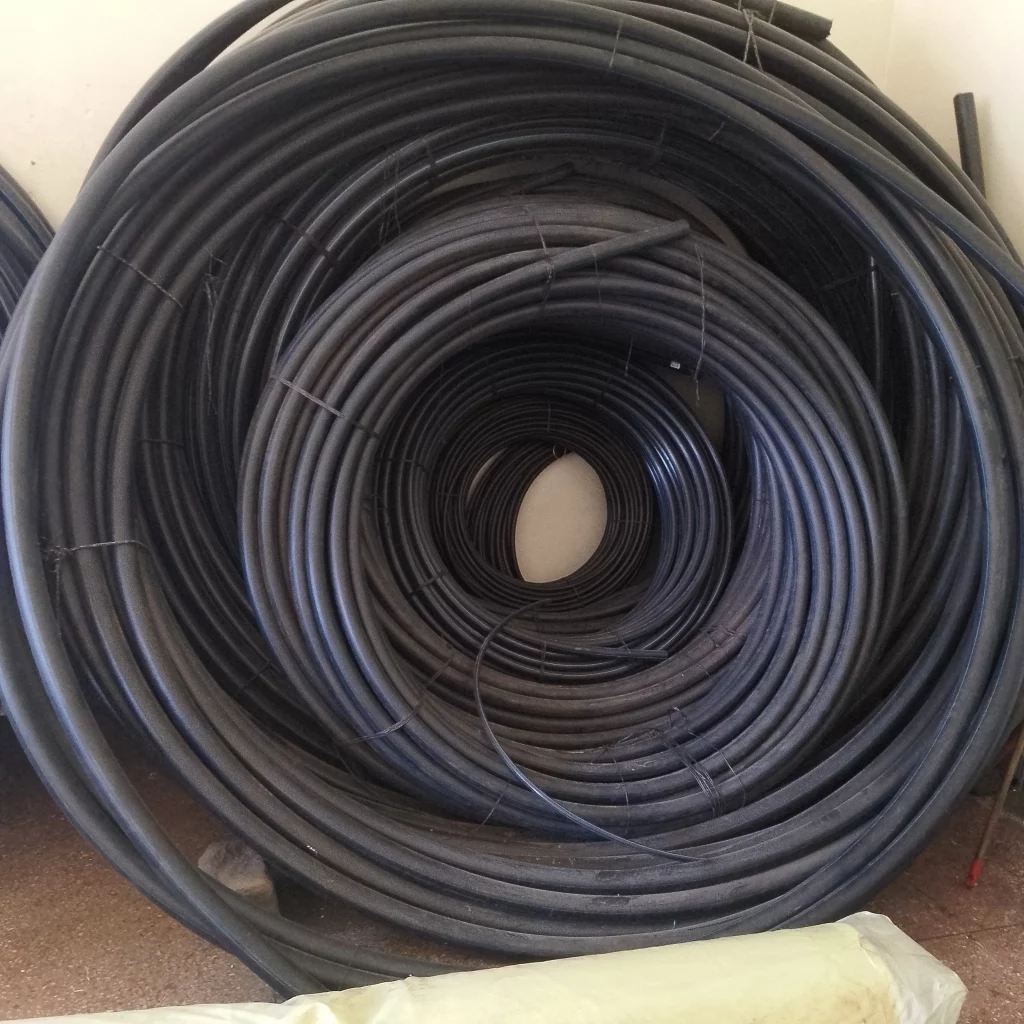
Main Line
The main line is the pipe that connects the drip pipe to your water source. It is typically made of PVC or HDPE and is larger in diameter than the drip pipe. The main line is typically buried several inches below the surface of the soil to protect it from damage.
Disk Filter
A filter is a device that removes dirt, sand, and other debris from the water before it enters the drip system. This helps to prevent the emitters from clogging. Filters can be either mechanical or chemical. Mechanical filters use a physical barrier to remove debris, while chemical filters use chemicals to kill or deactivate bacteria and other microorganisms.


Sub-Main Lines
Sub-main lines connect the main line to the drip pipe. They are typically made of PVC or HDPE and are smaller in diameter than the main line. Sub-main lines are typically buried several inches below the surface of the soil to protect them from damage.
Ball Valves
Valves are used to control the flow of water in the system. They can be used to turn the system on and off, to regulate the flow of water to different parts of the system, and to flush the system. There are several different types of valves used in drip irrigation systems, including gate valves, ball valves, and solenoid valves.
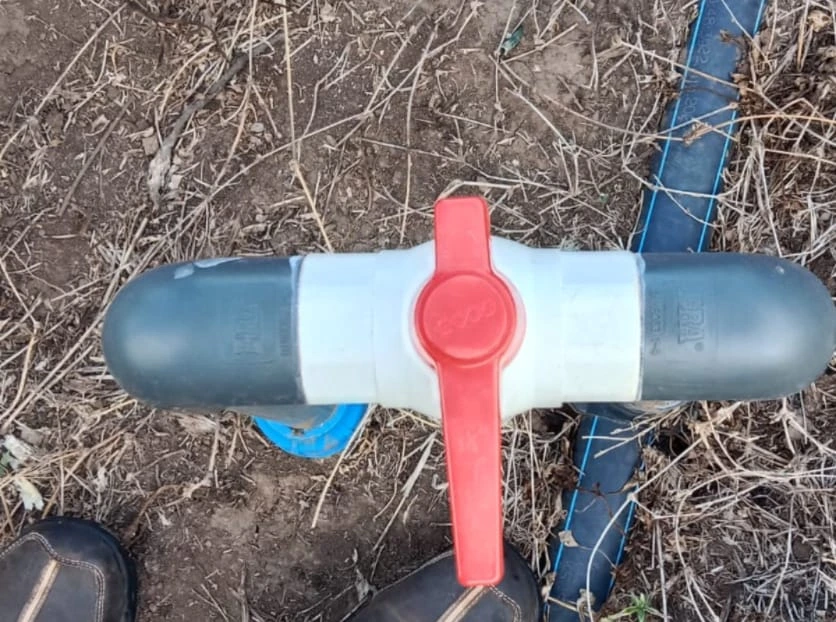
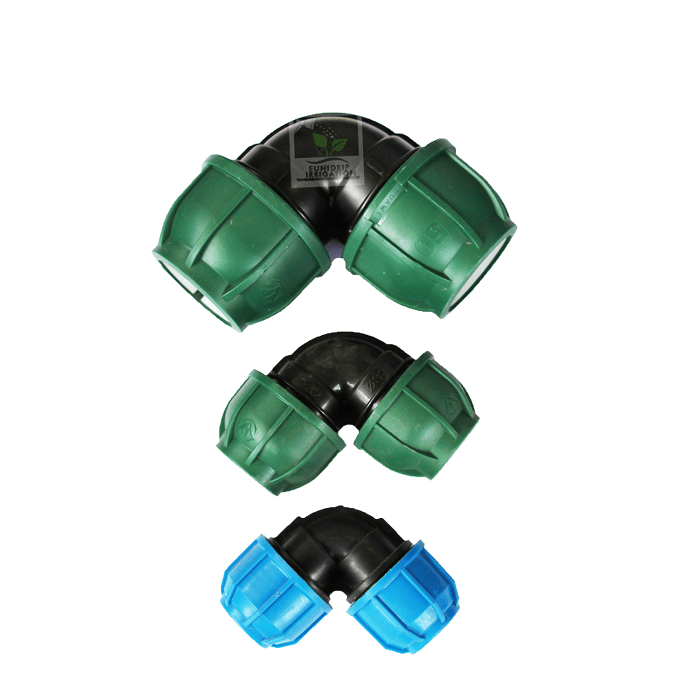
Fittings
Fittings are used to connect the different components of the system together. They include elbows, tees, couplings, and adapters. Fittings are made from a variety of materials, including PVC, HDPE, and brass.
5000 liters water tank
An elevated 5000 liter water tank is a great way to improve the efficiency and effectiveness of your irrigation system. By storing water above the ground, you can use gravity to create water pressure, which can help to reduce your energy costs and improve the performance of your irrigation sprinklers.
Elevated water tanks are also a good way to reduce water waste. By storing water in a tank, you can avoid evaporation and runoff, which can be a significant problem with traditional irrigation systems.
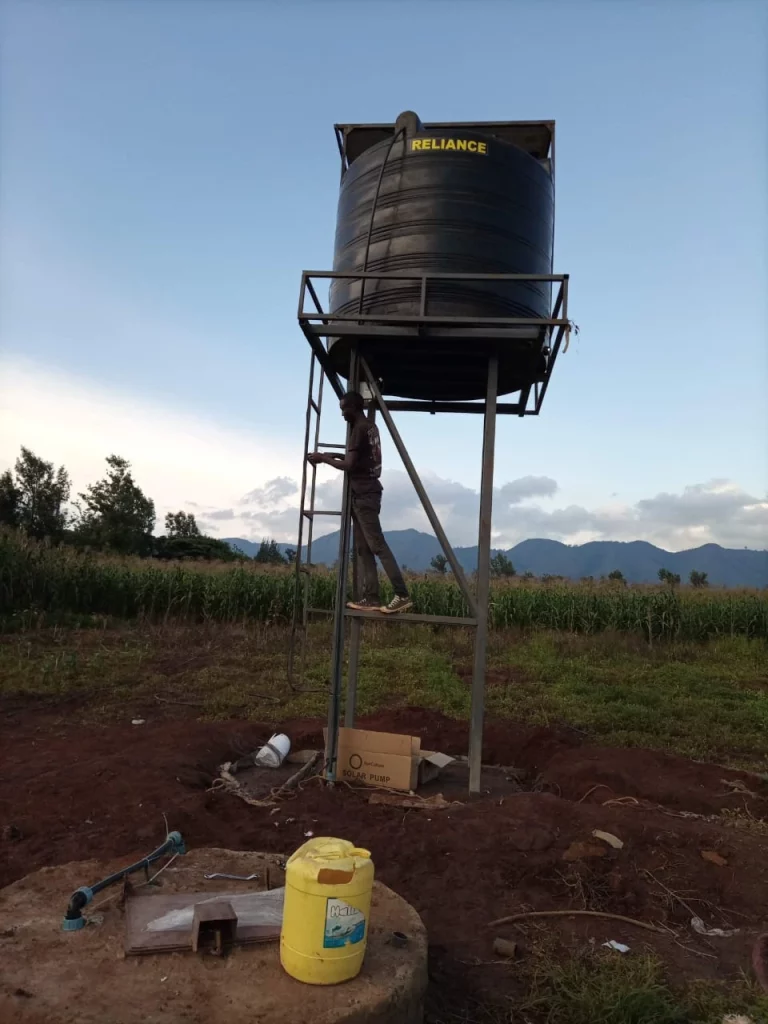
Crops grown under simple drip irrigation in Kenya
The majority of plants grown under this sector are vegetables and fruits. These may include sukuma wiki, coriander (dhania), spinach, tomatoes, bulb or sleek onions, berries and many more.
Factors considered in the choosing simple drip irrigation in Kenya
The following are factors that one has to consider before settling into this type of drip irrigation
- Source of water- most drip irrigation systems require generally clean water to avoid the blockages of drip emitters.
- Type of crop to be grown- type of crop or plant dictates the amount of water that is required per season. In case of water shortages, the farmer may opt to top up water.
- Planting medium. Under planting medium, some individuals may prefer cocoa peat, soil, liquid solution or sugar cane bagasse.
This shows that one may choose to go into hydroponics or just use simple soil as the planting medium.
Why choose polyethylene pipes rather than other pipe types
- Very strong with high tearing resistant.
- Durable because of non corrosive elements used in its manufacturing.
- High chemical resistant.
- Resistant to sun UV rays.
- Cost efficient and economical as compared to other pipe types.
- Easy to maintain.
- Drip emitters- for drip emitters one may choose on button drippers (have capacity of discharging water 1.0 liters per hour to 60.0 liters per hour) or drip line which has water discharge of 0.7 liters per hour to 1.0 liters per hour.
Step to step connections of drip lines.
For drip lines connection procedure, one must choose whether the main line is to be beneath the soil or above the soil surface.
For the main line below the soil surface, the requirements are main line pipe (preferable polyethylene pipe), start connectors, risers (polyethylene pipe of 16 millimeters or 12 millimeters), takeoff connectors and the drip tape of chosen spacing.
When one requires connection which is above the soil surface, the risers and the starter connectors will not be included in the connection since the main line and takeoffs connectors will be at the same level
These connectors are relatively cheap with one going at a cost of ksh15 to ksh25 as priced by Eunidrip.
Requirements for drip line connection are:
- Land preparation
Land preparation is a process that involves several activities they include, plowing, breaking of the soil particles in order to add important soil nutrients.
The purpose of these activities is to improve crop/plant growth and development.
Land preparation ensures that there is sufficient water, heat, oxygen, and other important soil nutrients.
This process will allow the soil to be more compressible to allow the penetration of the roots.
When preparing land for drip irrigation raised beds are very important.
Beds refer to raised subdivided seedbed uniformly distributed all over the farm they have paths in between to allow ease movement of the farm operators.
Raised beds also play a major role in drainage and aeration
Obtaining beds for drip irrigation.
In bed preparation, the standard and most recommended bed sizes range from one meter (1m). Sometimes 1.5 meters are used for perennial crops like Stevie and other herbs.
The most convenient path width should be between 40cm to 50cm.
This will ensure major parts of the land are put under cultivation.
After the selection of the convenient bed width and the paths, the beds are dug to a depth of between 12cm to 30cm.
While doing this breakdown soil clod (big soil particles brought about during plowing) into fine particles.
Remove weeds, mix manure into the soil and expose microorganisms the soil to the sunlight to be killed.
The plowing should be done along with the land/garden during the first plowing and across during the second plowing.
This will ensure microorganisms and weed seeds are brought above the soil and exposed to the sunlight.
On exposing these It ensures faster growth of weed seeds due to warmth. After germination of the weed seeds due to favorable conditions brought by sunlight, use the recommended herbicides to kill the weed. Get recommendations from a qualified agronomist.
Do final plowing to bury the dead plants into the soil.
The weed will later decompose/rot to add nutrients to the soil. The beds should then be leveled into a uniform height and tilth to ensure uniform germination of seedlings. After all these practices prepare and organize for the drip installation process.
- Labour requirement
This includes skilled and non skilled labor source. This will ensures the technical and the manual labor are provided.
Technical skills include interpretation of the designed farm layout, main line manipulation .i.e. measuring the drip line to drip line distance along the main line and provision of any technical assistance.
The sole responsibilities of non skilled personnel is to provide manual in constructing beds, channeling of main lines and sub main lines also provision of technical support.
